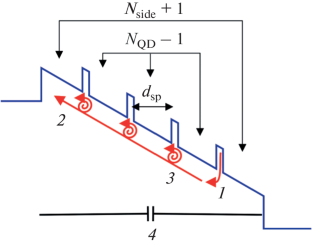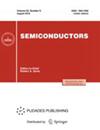量子点波导光电二极管速度性能模型
IF 0.6
4区 物理与天体物理
Q4 PHYSICS, CONDENSED MATTER
引用次数: 0
摘要
摘要 本文提出了一个模型,可以对波导 pi-i-n 光电二极管的速度性能进行分析,该二极管的光吸收区为多层量子点阵列,中间用未掺杂的间隔物隔开。研究表明,量子点的最佳层数和间隔物的最佳厚度都能提供最宽的带宽。结果表明,基于 InGaAs/GaAs 量子点的波导光电二极管的频率范围(-3 dB 级)有可能超过 20 GHz。本文章由计算机程序翻译,如有差异,请以英文原文为准。

Model for Speed Performance of Quantum-Dot Waveguide Photodiode
Abstract
A model is proposed that makes it possible to analytically analyze the speed performance of a waveguide p–i–n photodiode with a light-absorbing region representing a multilayered array of quantum dots separated by undoped spacers. It is shown that there is an optimal number of layers of quantum dots, as well as an optimal thickness of the spacers, which provide the widest bandwidth. The possibility of achieving a frequency range (at the level of –3 dB) above 20 GHz for waveguide photodiodes based on InGaAs/GaAs quantum well-dots is shown.
求助全文
通过发布文献求助,成功后即可免费获取论文全文。
去求助
来源期刊

Semiconductors
物理-物理:凝聚态物理
CiteScore
1.50
自引率
28.60%
发文量
131
审稿时长
3-6 weeks
期刊介绍:
Publishes the most important work in semiconductor research in the countries of the former Soviet Union. Covers semiconductor theory, transport phenomena in semiconductors, optics, magnetooptics, and electrooptics of semiconductors, semiconductor lasers and semiconductor surface physics. The journal features an extensive book review section.
 求助内容:
求助内容: 应助结果提醒方式:
应助结果提醒方式:


